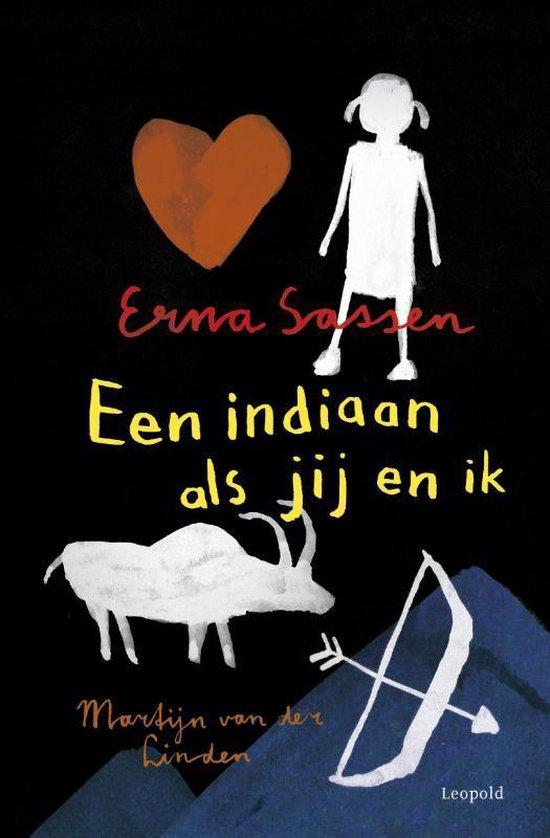An Indian Like You and Me
In the world of books, there have been many calls for more attention to be paid to diversity. Erna Sassen’s book is a laudable response. This original story about the loner Boaz, who is so proud when the new girl, Aïsha, comes to sit by him at school, shows that a friend is a friend, and appearances don’t matter.

This doesn’t mean that Aïsha’s appearance doesn’t play a role in their developing friendship. From the moment Boaz sees her, she has his attention. Because her sad brown eyes tell him that she has Indian blood. And if anyone knows how to recognize Indians, it’s Boaz. He’s read stacks of books about their history. He almost feels like he’s one himself, particularly when he’s roaming around the dunes. In her sparkling and humorous sentences, Sassen perfectly captures Boaz as he becomes absorbed in his magical game.
Meanwhile she subtly reveals that Aïsha is a refugee, without ever making an issue out of this fact. Aïsha doesn’t speak Dutch, but that isn’t an obstacle to her friendship with Boaz. They even do a project together, about the Maya peoples, which is ingeniously interwoven throughout the story, along with other facts about indigenous civilizations, forming an indirect plea for greater knowledge and diversity.
The tension rises when Boaz’s ambitious dad tells his son that he’ll be skipping a year at school. Boaz is worried that he’ll lose Aïsha as a classmate. Rejecting the expectations of his parents, his teacher and society as a whole, Boaz runs furiously, like ‘an injured bison with a spear in its back’, into the dunes, where he gets lost.
With vivid and appealing images like this one, Sassen cleverly drives home all of the emotions that she evokes, assisted by Martijn van der Linden’s fine, robust illustrations in the style of petroglyphs.
In the end, of course, everything turns out fine. The fact that Aïsha is no more, or less, of an Indian than Boaz has no impact on their friendship. In this affectionate story, diversity is fortunately a matter of course.
Design, illustrations and text enter into a fine union.
Jaapleest.nl
Erna Sassen addresses current themes in a way that is original, touching and humorous.
Trouw
-wolfgang-schmidt.jpg&w=640&q=75)